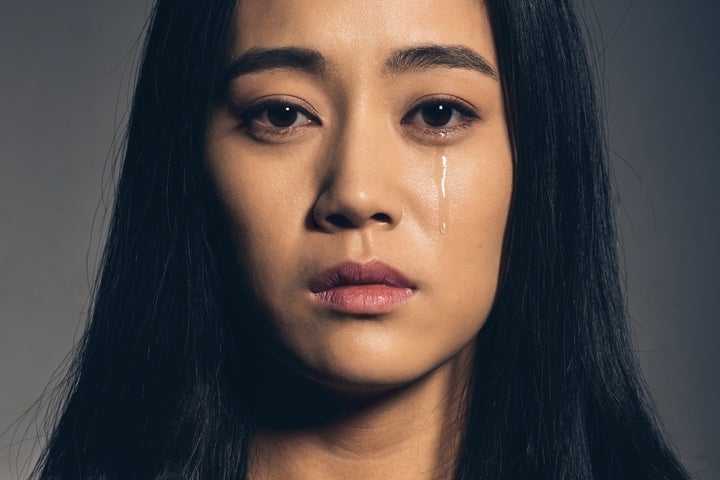
Idea Images via Getty Images
Feeling bad? Sometimes having a good cry is all that it takes to lift your spirits.
New research shows that while shedding a few tears leads to a dip in mood immediately after the crying jag, about 90 minutes later people report feeling even better than they did before they had reason to cry.
"This is the first study that has demonstrated a clear relation between experimentally induced crying and subsequent, more long-term mood improvement,” wrote lead researcher Asmir Gračanin of Tilburg University in the Netherlands in the paper.
Past research on crying has turned up conflicting results on the issue. Retrospective studies, those that ask people to look back in time and describe a weepy situation, generally find that crying lifted people’s moods. But laboratory studies, which assess people’s moods on a precise scale immediately after crying, have often found that people feel worse after a sob. Gračanin's findings bridge the gap by measuring people’s moods at three different times: immediately after crying, 20 minutes afterward and then 90 minutes afterward.
To get people crying in the first place, Gračanin showed 72 study participants an edited version of known tearjerkers: "La Vita è Bella,” a film about a Jewish father’s efforts to protect and care for his son in a concentration camp during the Holocaust, or "Hachi: A Dog’s Tale,” about a faithful dog who waits at the train station for his owner to come home even years after the man’s death.
To get a taste of these sob stories, take a look at this trailer for “Hachi: A Dog’s Tale."
You’re crying already, aren’t you? Well, so were 69 percent of the participants who watched “Hachi," and 40 percent of the participants who watched "La Vita è Bella.” And as the participants cried, two independent researchers watched them to verify that their eyeballs were indeed getting sweaty. After the films, all the participants filled out mood questionnaires immediately, then did so twice more at the 20-minute and 90-minute marks.
To see how crying affected their mood, Gračanin and his team compared those questionnaire results to the answers participants gave before watching the movie. He found that criers felt worse immediately after the film, and then returned to their baseline moods, or how they felt before the movie, at the 20-minute mark. Most interestingly, the film criers felt even better than they did before the film at the 90-minute mark, while participants who didn’t cry reported no significant changes to their mood, for better or worse, throughout the entire experiment.
"After the initial deterioration of mood following crying, it takes some time for the mood not only to recover but also to be lifted above the levels at which it had been before the emotional event,” concluded Gračanin in a statement about the research.
Beyond lifting our moods, crying actually serves a lot of useful purposes. Anyone who’s watched Pixar’s “Inside Out” (another notorious tearjerker) is well-acquainted with the theory that feeling sadness and expressing it with tears can be a powerful communication tool to call for help. SPOILER ALERT: In the film, it isn’t until main character Riley cries and tells her parents how miserable she is in their new home that both of her parents embrace her and help her feel safe and comforted.
And Gračanin also points out that crying helps our body physically calm down after a stressful or emotional ordeal by regulating things like body temperature and blood pressure. While he hesitates to say that crying is directly beneficial for us humans — the only animals who have the capacity to shed emotional tears — Gračanin does think that people should not be discouraged from crying, especially in front who care for and support us.
Gračanin's research was published in the journal Motivation and Emotion.
Also on HuffPost:
